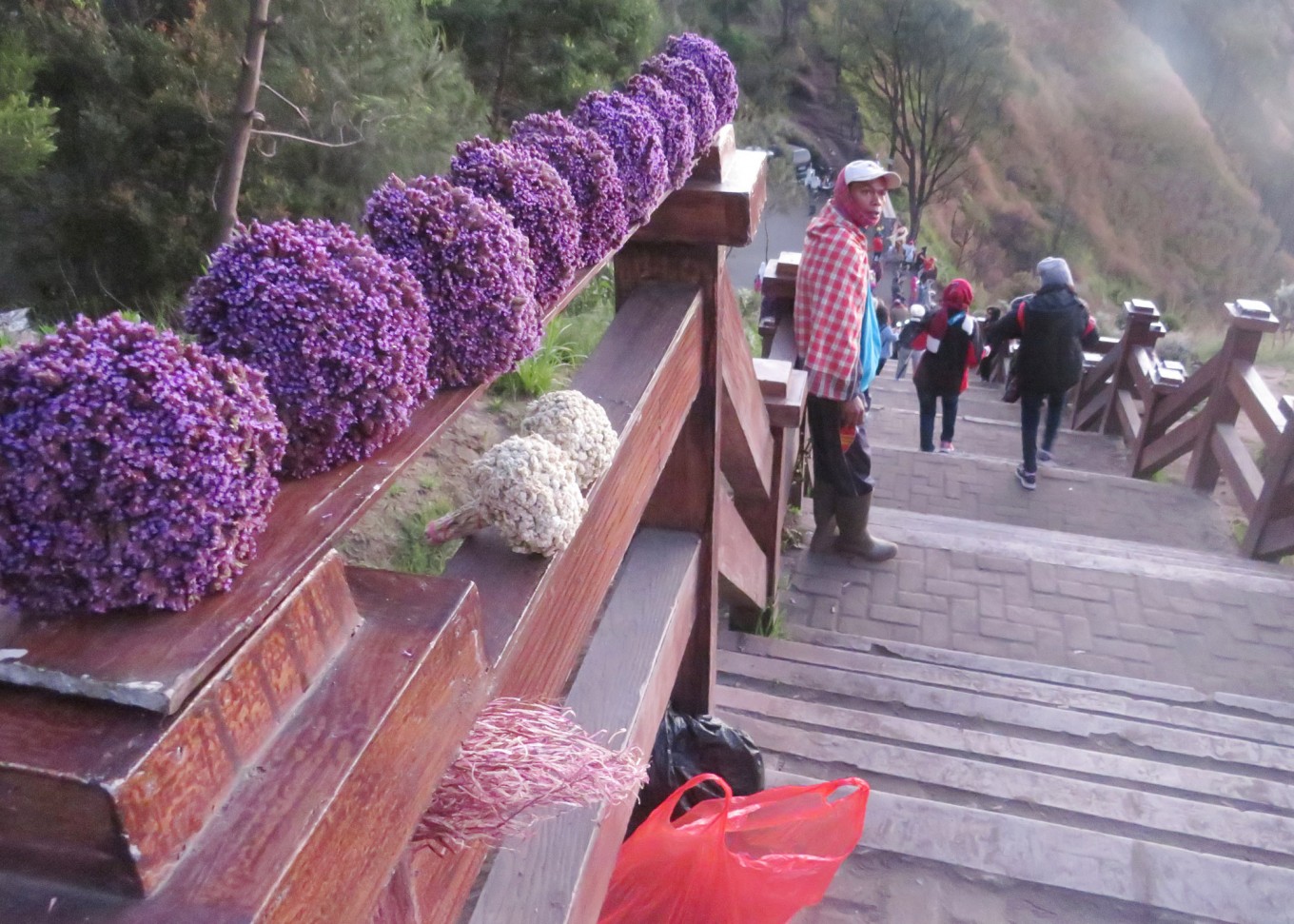Popular Reads
Top Results
Can't find what you're looking for?
View all search resultsPopular Reads
Top Results
Can't find what you're looking for?
View all search resultsEdelwiss tourist villages to open in Bromo National Park
Two Edelweiss Tourist Villages in East Java's Bromo Tengger Semeru National Park are slated to open soon, offering new attractions in the popular destination.
Change text size
Gift Premium Articles
to Anyone
B
romo Tengger Semeru National Park (TNBTS) is gearing up to open two Edelweiss Tourist Villages in East Java, namely Ngadisari Village in Probolinggo regency and Wonokitri Village in Pasuruan regency.
The launch event, titled "Land of Edelweiss Festival", will take place at the Wonokitri Village Pavilion on Nov. 10.
TNBTS head John Kenedie said the tourist villages aimed to cultivate edelweiss flowers outside of their natural habitat, which are found across the national park area.
"In addition, it is also to preserve local Tengger culture, because this flower is sacred and complements offerings in their ritual traditions, while also providing an opportunity to improve the economy of the community," John said in Malang on Tuesday.
John added that there were three types of edelweiss, namely Anaphalis Javanica, Anaphalis Visida and Anaphalis Longifolia. Anaphalis Javanica is locally known as Kembang Tana Layu, referring to the fact that this flower does not easily wilt, and is known as an eternal flower.
"This condition makes this edelweiss highly sought-after, especially among young people," he explained, adding that this particular type of edelweiss was protected by the government.
Read also: Edelweiss park: Safeguarding Tengger nature and tradition
He said the cultivated flowers were a second generation, or F2, explaining that the seeds were taken from the national park area through a series of cultivation trials and developments since 2014, with 5,600 seeds provided for each village.
"This process is laid out in a decree from the Natural Resources Conservation Agency (BKSDA)," he added.
John said the tourism villages would be maintained by their own caretakers, specifically from the Edelweiss Farmers Group in the two villages.
The villages aim to offer a different experience to tourists visiting Bromo in addition to enjoying the panorama and the sunrise.
Wonokiri Village head Iksan said edelweiss cultivation efforts in the village were also economically beneficial for the community.
"Prior to 2007, our villagers were purely relying on crop farming, but at least 60 percent are now able to look at tourism service opportunities," he said.
Iksan added that edelweiss tourism would be combined in one unit with village-owned enterprises. (liz/wng)







